Architect: John Ronan Architects
Location: Chicago
Completion Date: June 2023
The new Chicago Park District Headquarters, located in Brighton Park, a neighborhood on Chicago’s South side, is an 80,000-square-foot building housing offices for city employees as well as public recreational facilities such as a gym and basketball courts. The headquarters, and surrounding 17-acre park, were master planned by John Ronan Architects and constructed on a former brownfield site. The project was completed in June and features a facade composed of reclaimed brick, glass curtain wall, and anodized aluminum.
Prior to construction of the headquarters and park, the site was “reclaimed” through the comprehensive removal of hazardous waste and underground storage containers. This program was undertaken through the EPA’s site remediation program. The particular parcel housing the district headquarters was purchased by the city in 2019.
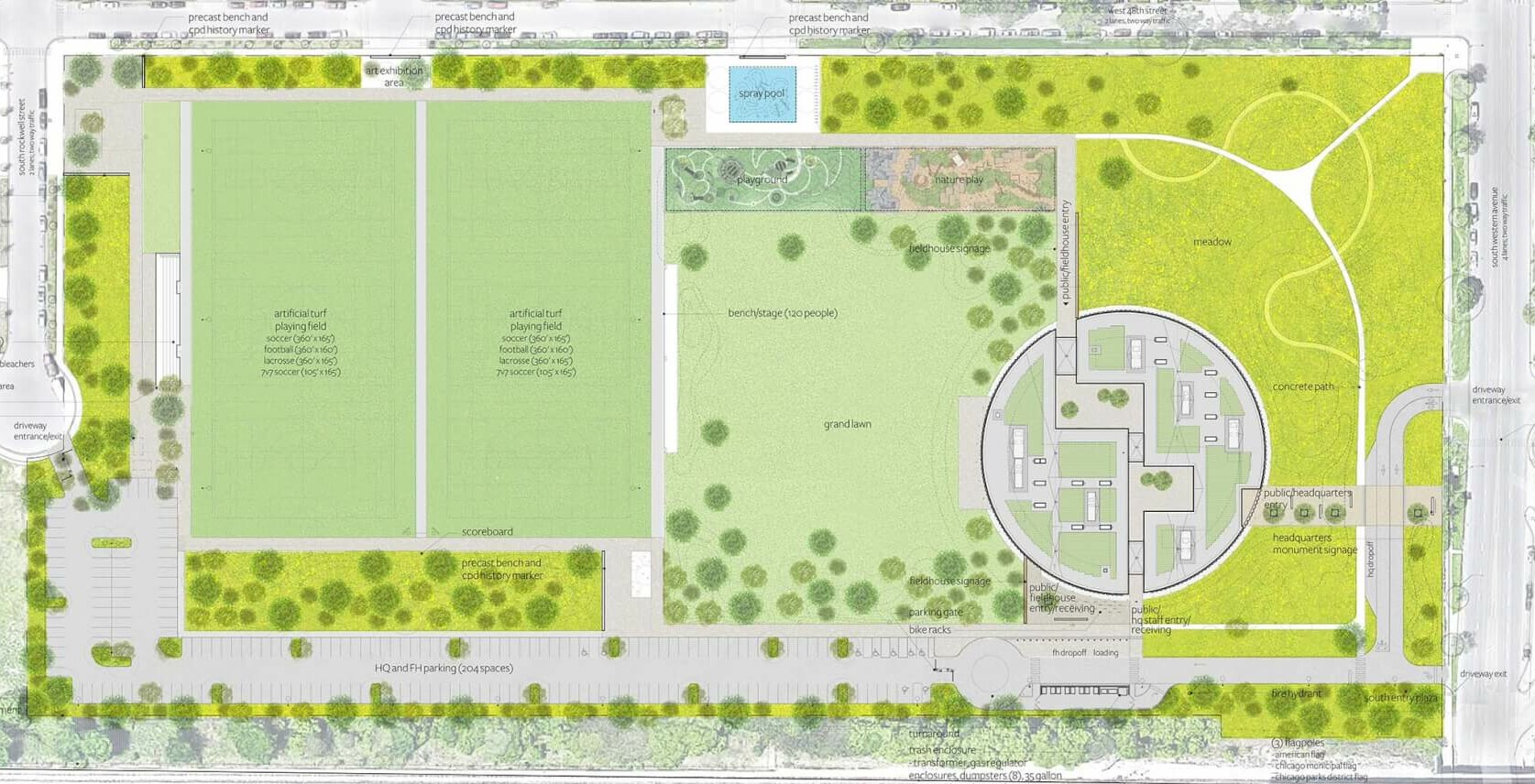
The Chicago Park District (CPD) vacated its previous headquarters in downtown Chicago as part of efforts by former Mayor Rahm Emmanuel to move city agencies away from downtown and into the neighborhoods, redistributing the geographical availability of municipal jobs.
In the 19th century, the Brighton Park area, as it is known today, was established as a livestock trading center, taking its name from England’s Brighton livestock market. In 1877, the Santa Fe railroad repurposed the area as a railyard. Heavy industry and manufacturing followed on the heels of the railyard, bringing industrial jobs to the area and rapidly expanding the neighborhood’s population. As the area deindustrialized in the late-20th century, manufacturers and residents left the area, leaving many of the former industrial sites vacant and heavily polluted.
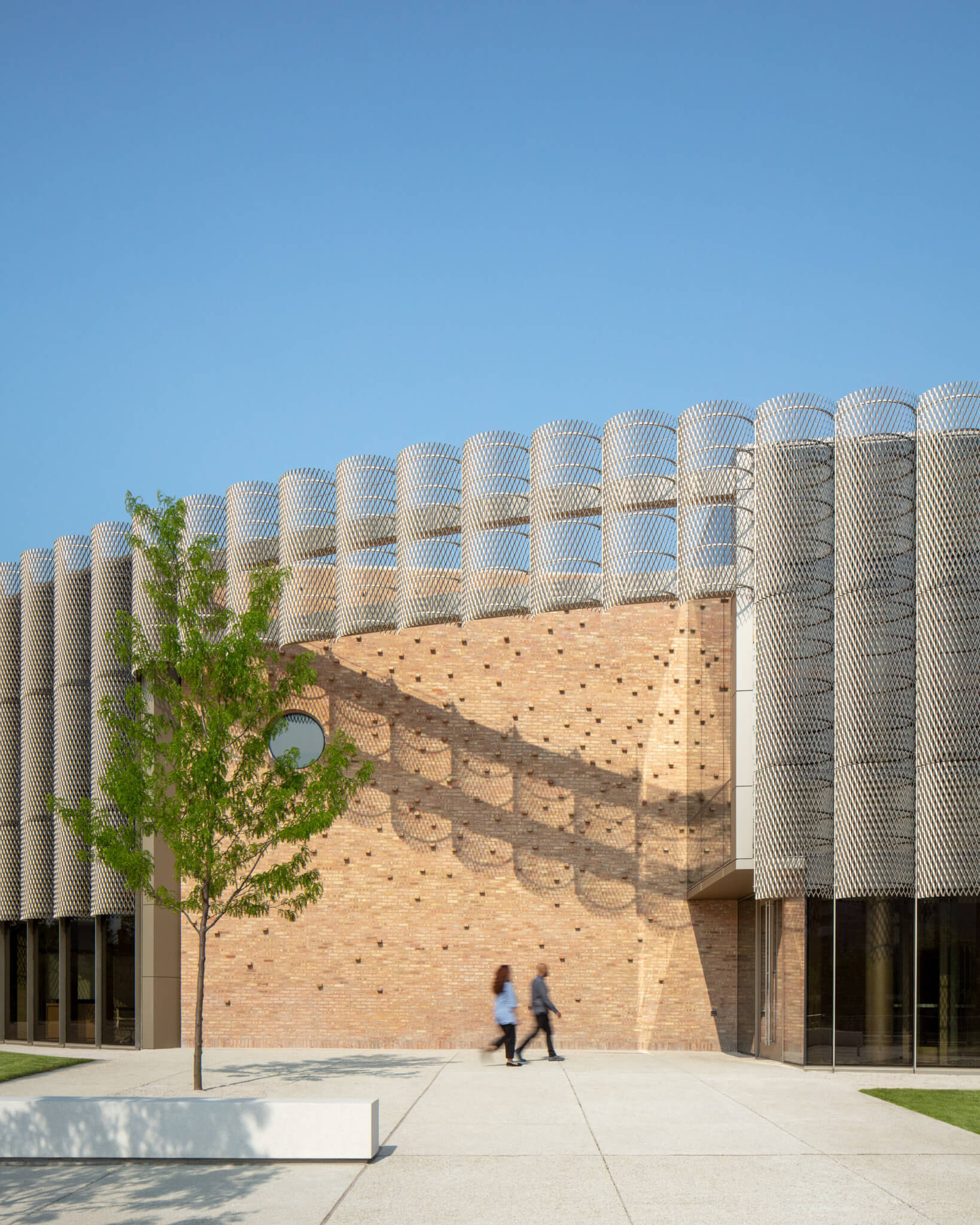
John Ronan Architects master planned the redevelopment of the site into a park. Despite earlier clean-up efforts, construction unveiled pollution that was previously hidden. John Ronan told AN that this included “contaminated soil, underground storage tanks, and remnants of old basements on the site uncovered during the excavation phase.” Nine additional storage containers were recovered from the site, including an emptied 9,000 gallon storage tank.
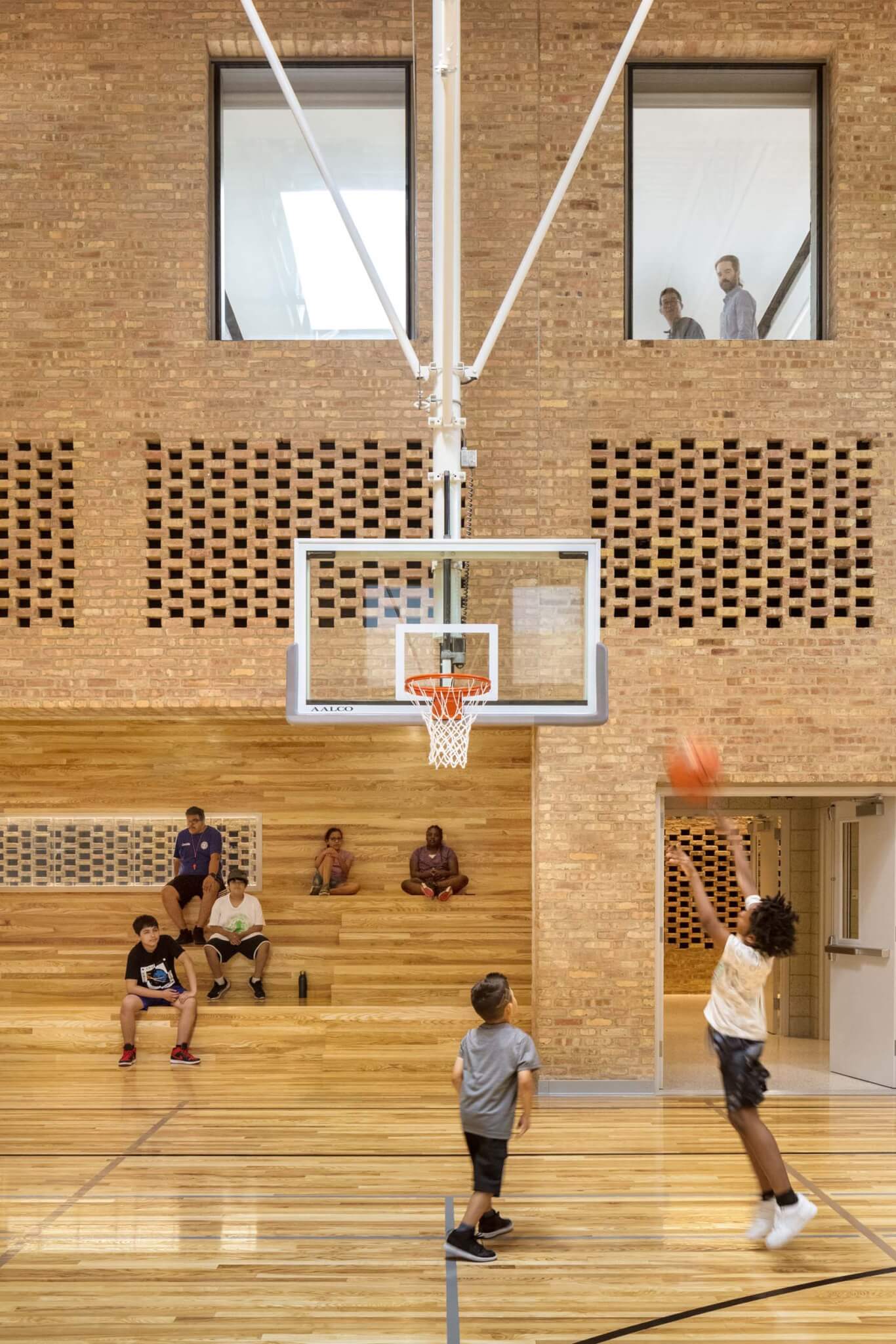
The headquarters building is circular in plan, providing office workers with wrap-around views of the surrounding park. 205 office workers occupy the building, which is organized to accommodate closed office and meeting rooms, as well as open meeting spaces. Office space on the second floor of the building overlooks the gymnasium, allowing CPD staff to spectate basketball games.
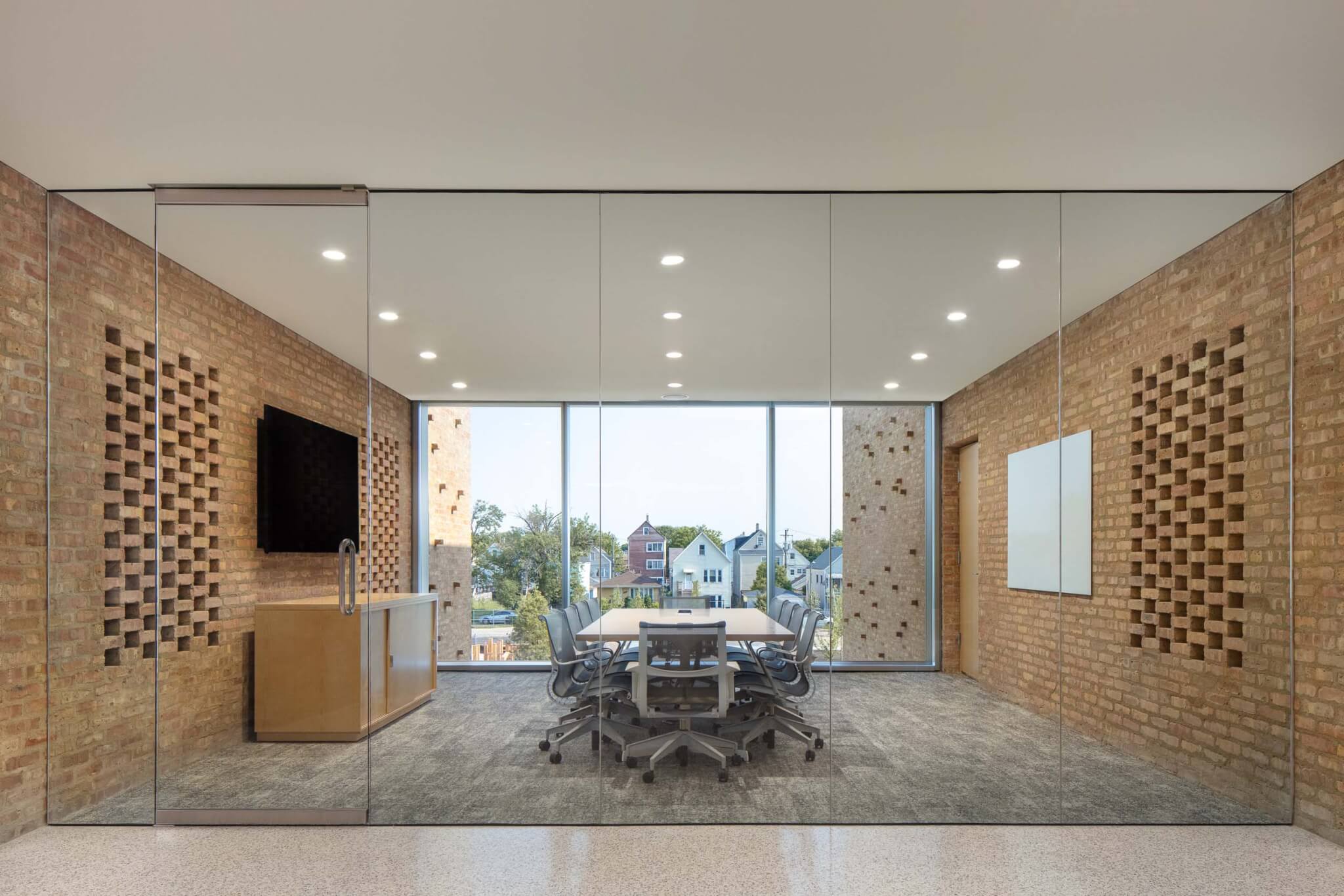
John Ronan Architects employed brick for the interior and exterior walls of the headquarters in combination with a unitized glass curtain wall. The masonry is supported structurally by metal joists between walls. The bronze-tinted glazing of the curtain wall complements the champagne-anodized aluminum screens shading the offices.
The interior of the headquarters building is clad in brick salvaged from two demolished buildings in Brighton Park. After being retrieved and organized from the demolition site, the bricks were inspected and tested for absorption and compression. From there, the architects sorted the bricks into three categories which denoted descending quality—A, B, and C. A map was created to indicate to the masons where to place each quality category, selected according to the prominence of the given wall span.
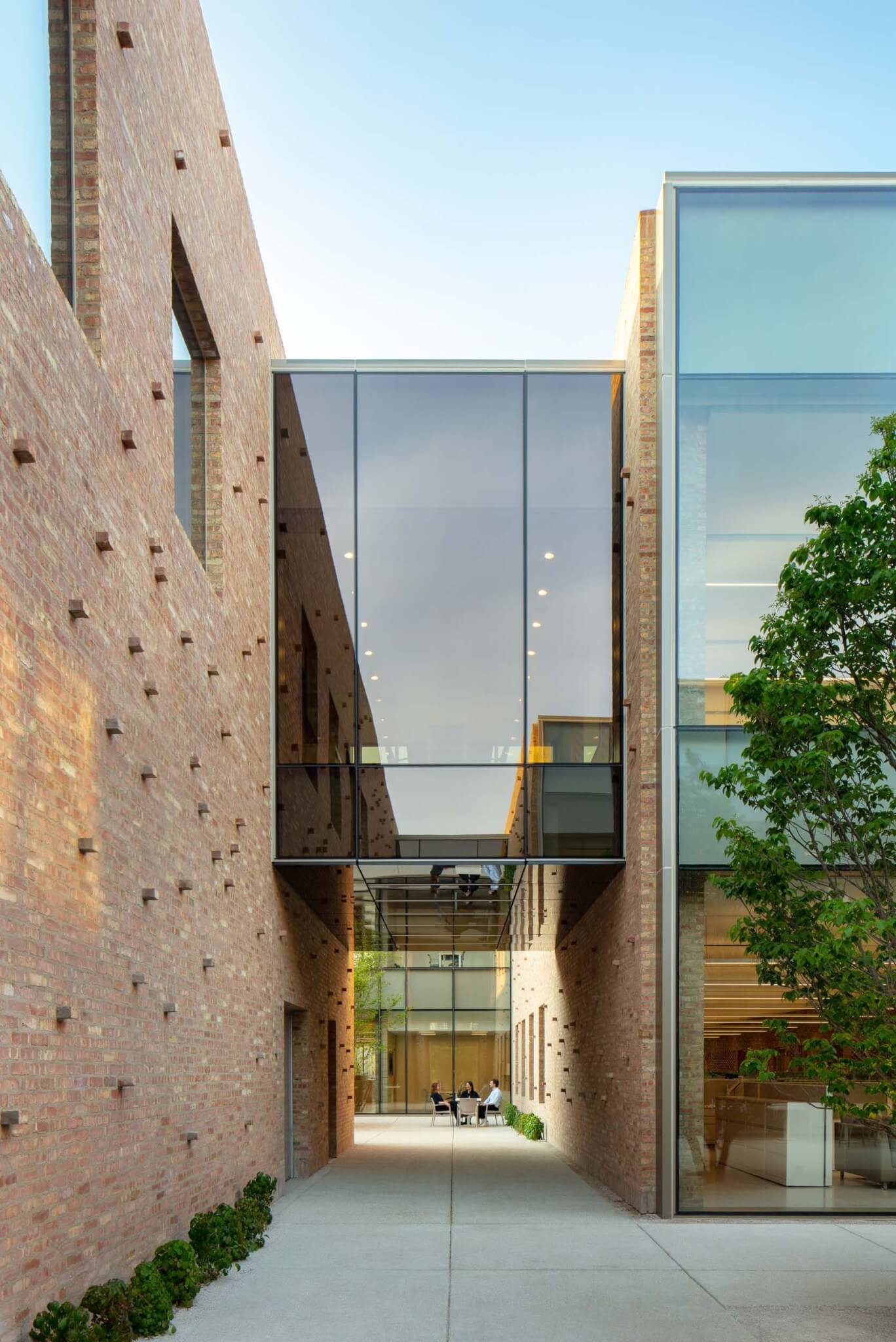
Specifically, the project utilizes Chicago common brick which was made from clay found in the Chicago River. Chicago common brick is recognizable for its distinctive light-salmon color. Considered inferior to bricks made from clay sourced from other locales, Chicago common brick was often used to adorn interior spaces, while more expensive ceramics were saved for the exterior.
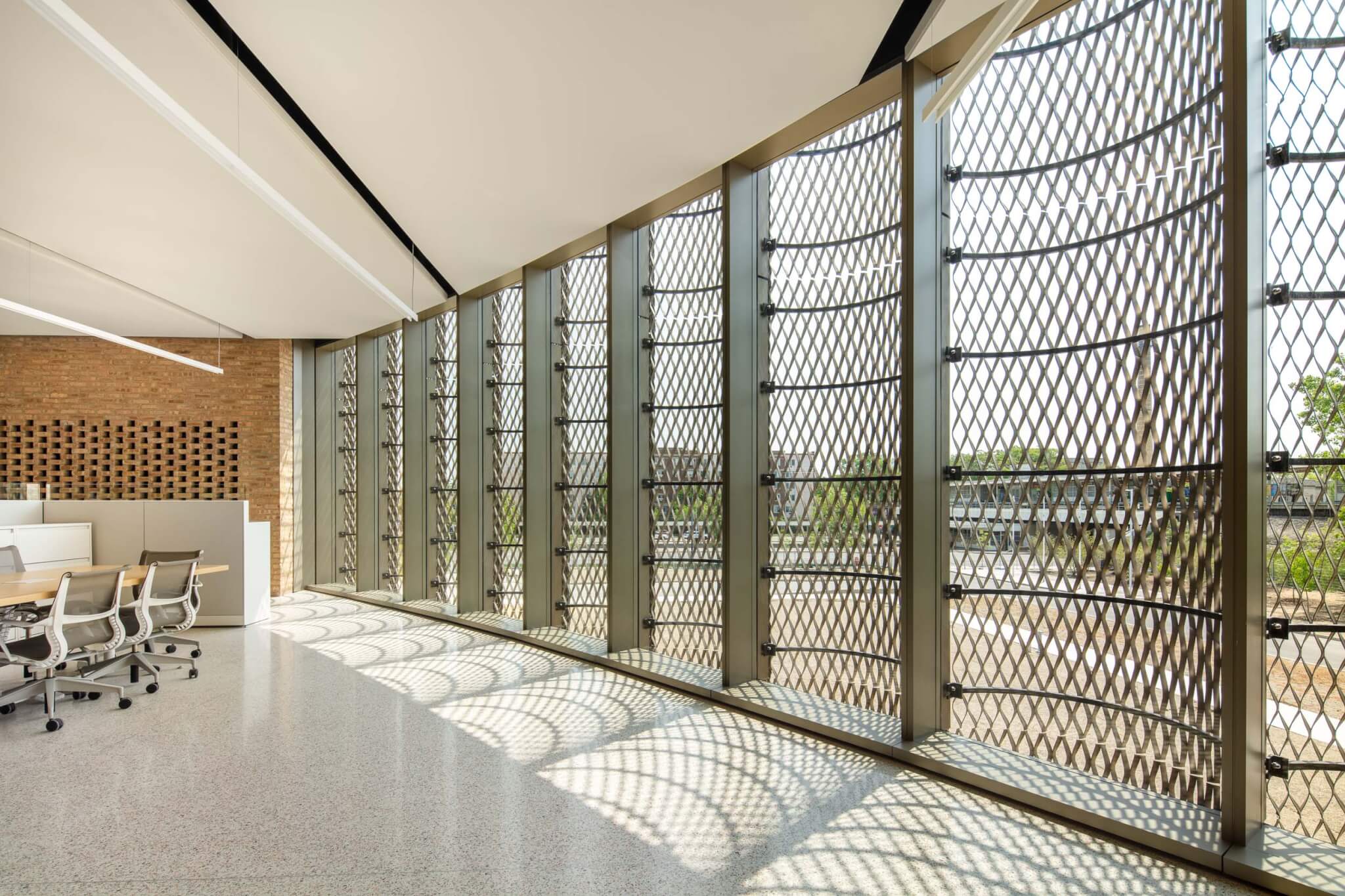
John Ronan told AN, “aluminum was chosen because it doesn’t rust; the anodized finish was selected over coated aluminum because of its visual qualities – it looks better in the sunlight than coated aluminum, which has a duller appearance.”
The building’s furniture, wall cladding, and gym floors use ash wood from trees that have succumbed to the Emerald Ash Borer, an invasive species of beetle from East Asia.



